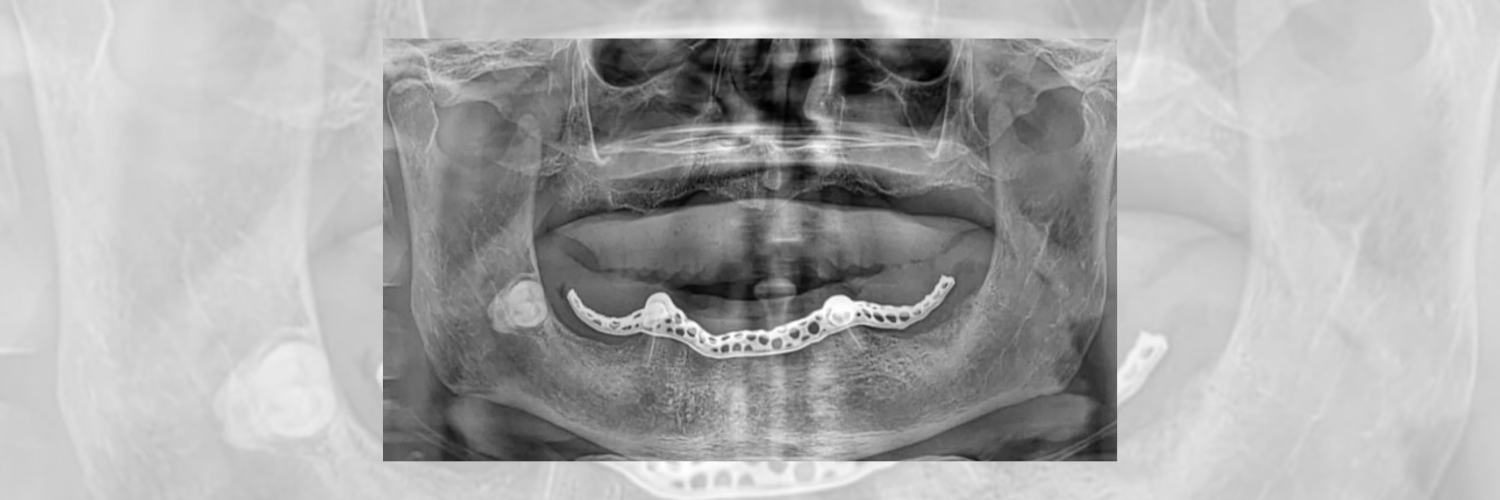Introduction
The prosthetic management of edentulous patients has always been a major challenge. Complete dentures have served humanity for ages, but at the same time have had their own issues. With advances in implant dentistry we have been able to provide better quality of life by providing edentulous patients with fixed teeth. However, the majority of the world population finds this treatment modality often unaffordable. To those who can afford the fixed implant option they may not have the bone, soft tissue or systemic condition to support such a massive reconstruction. Instead of opting for implant-supported fixed restorations, an alternative option with implant-supported overdentures has successfully helped many patients to elevate their quality of life, in particular by enhancing the retention of mandibular dentures.
Therefore, clinicians should always consider this as a viable option when restoring full arch cases. Implant-supported overdentures are economical, less invasive and can be less technique-sensitive when compared to full fixed prostheses. The latter, while providing a more permanent solution, can be more expensive, require more invasive procedures, and may not be suitable for all patients due to bone, soft tissue, or systemic conditions.
World economics and their correlation with full arch replacements
Full arch reconstructions are complex treatments in which multiple factors come into play. There are many ingredients needed to make this recipe a long-lasting success. Patient-centered outcomes are an important measure of the success of a treatment, both objectively and subjectively, particularly in regard to oral health economics (Rohlin and Mileman, 2000). It is important to consider patient preferences and attitudes to the treatment when selecting a treatment plan and respecting their decision when deciding on the use of implants and the type of prosthesis (Kay & co-workers 1992). Respecting the patient’s decision becomes even more relevant in those who are considered to be vulnerable, as ethical considerations strongly preclude “forcefully convincing” the patient to accept a given treatment plan. Full arch fixed restorations, apart from requiring high clinical skills, are also expensive. One should realize that as dentists and health-care providers for the geriatric population we must strive to improve the quality of life of the elderly. At least half of the world population has a (nominal) per capita GDP – a measure of a country’s economic output – of less than $8,000. In the context of the Indian subcontinent and the majority of Africa, the figure is much lower . With such low earnings, spending capacity, absence of dental insurance and hardly any support from the government, a vast population finds fixed replacements out of their reach. As geriatric care givers, it is imperative that we expand the horizons of implants as a treatment option to the people of the so-called second and third world.
Are fixed options always better than implant overdentures?
From a clinician’s point of view, rendering a good full arch fixed solution to their patients certainly gives a sense of accomplishment and is a matter of pride for any clinician who aspires to practice implantology. While it testifies to one’s clinical skills, it is also financially appealing as it is certainly one of the most expensive treatments one can offer as a dentist. From the patient’s point of view, in a paper published by F. Muller, potential barriers to accepting an implant-related treatment were identified as a) cost, b) lack of perceived necessity, and c) old age. Ultimately it is not just about placing and restoring implants; it is about patients themselves when we consider patient-centered care.
The 7th ITI Consensus meeting held in Lisbon in 2023 revealed some eye-opening facts. Group 4, in particular, made consensus statements and clinical recommendations relating to patient benefits following implant treatment in fully edentulous patients. Group 4 analyzed data for dental patient-reported outcomes (dPROs), as the patient’s perspective of treatment is a key factor in analyzing treatment success. The difference between a complete implant fixed prosthesis and implant overdentures in terms of patient-reported outcomes were compared, and the following consensus statements were defined.
Consensus statement 1: In fully edentulous patients wearing removable complete dentures (CD), the use of dental implants to retain/support dental prostheses in the maxilla and/or the mandible leads to an improvement in overall dental patient-reported outcomes (dPROs).
Consensus statement 2: Edentulous patients wearing complete dentures (CD) gain substantial improvements in overall dPROs following treatment which are comparable with either complete implant-supported fixed dental prostheses (CIFDPs) or implant overdentures (IODs).
Consensus statement 3: When restoring the edentulous mandible with an IOD, both bar and non-splinted attachments lead to a similar improvement in dPROs.
Consensus statement 4: With respect to dPROs, mandibular IODs retained by two implants are superior to IODs retained by one implant.
Consensus statement 5: Increasing the number of implants to more than two implants to retain a mandibular IOD does not further improve dPROs.
Consensus statement no 2 and 5 are extremely significant as they show a big ray of hope for people who cannot afford full fixed prosthesis. At the same time, they reassure dentists about the huge benefits of implant overdentures so that they can be offered as a strong and viable option to a vast population. Given the glamor associated with a fixed prosthesis, implant overdentures have for a long time remained the unsung hero.
Shortcomings/challenges of fixed-implant-supported prostheses
Esthetics: Practitioners should understand the consequences of edentulism. Edentulism doesn’t just lead to loss of teeth but also to loss of bone and soft tissue; it has an effect on oral musculature, esthetics, and speech, to name a few. Hence the goal of a full arch reconstruction should be to try and restore everything that is lost. This poses a plethora of esthetic challenges. In conventional complete dentures, the flanges of the denture substitute for the loss of bone and soft tissue volume leading to good fullness and restored esthetics. This is one of the challenges when managing ISFDP with insufficient lip and facial support due to the absence of flanges, which is commonly seen in advanced cases of edentulism. (Fig. 1a: advanced case of edentulism). Fully edentulous patients presenting with thin short lips restored with a flangeless fixed solution can sometimes demonstrate a transverse upper labial crease during smiling, which can be an esthetic compromise (Figs 1b,1c).

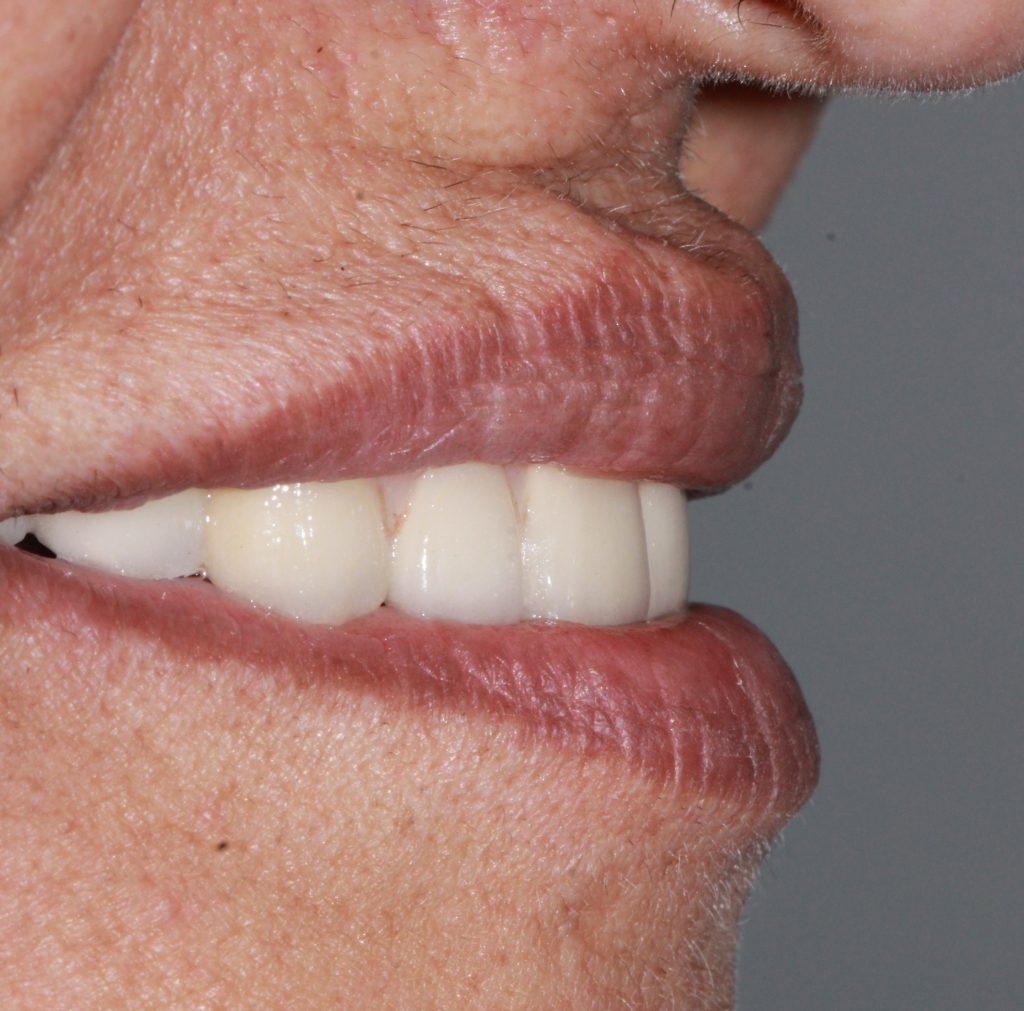
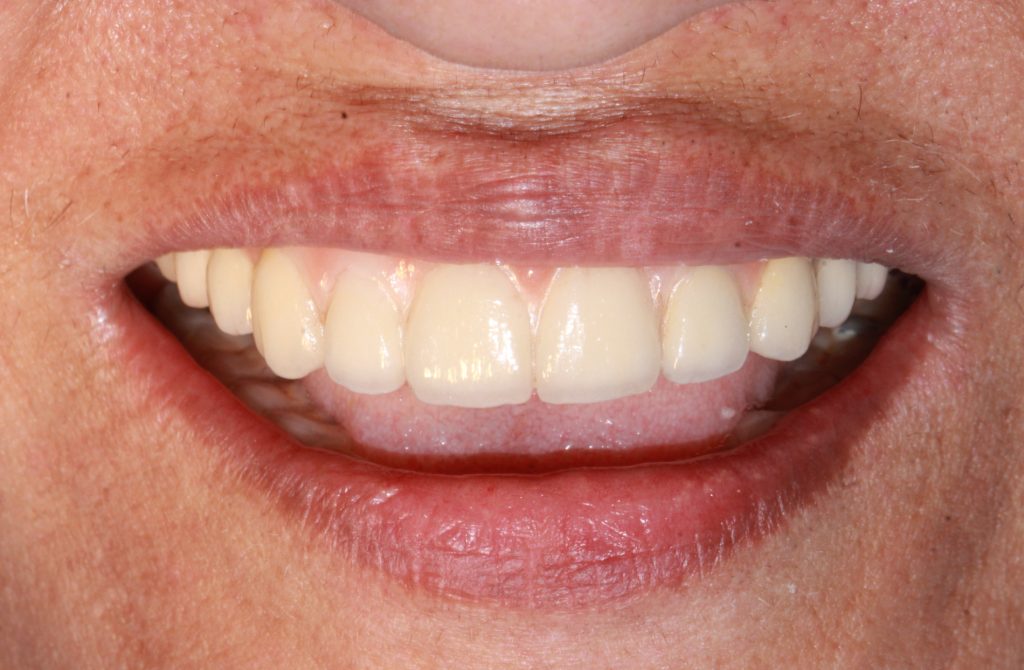
Oral hygiene and prosthesis maintenance: When a patient with a removable prosthesis has eaten, food debris is often left under the denture. With a removable prosthesis, patients can easily take out and clean the prosthesis in seconds. With fixed prostheses, cleaning requires significant time and effort, and there is often inadequate access to allow a patient to clean under the prosthesis. This often results in tissue inflammation, which at times can be painful around the soft tissue. If a significant ridge lap to ISFDP is necessary for esthetic reasons, the result may be not only inflammation but also plaque accumulation, which can lead to bad breath and compromise the implants underneath with peri-implant mucositis, or peri-implantitis around the implant leading to bone loss.
Cost: Cost plays a very significant role in a patient’s acceptance of the proposed treatment plan. Implant-supported overdentures can cost anywhere between one-third and one-fifth of fully fixed options due to a reduced number of implants and a simpler prosthesis structure.
Salvaging existing teeth for denture retention, stability and support
When considering rehabilitating a patient with an implant-supported overdenture, if the patient is still partially dentate, one should always explore the possibilities of salvaging any existing teeth. A tooth-supported overdenture can also be as effective as an implant-supported overdenture (Fig. 2 depicts pre- and post-op opg of a tooth-supported overdenture with telescopic copings). Therefore, it is critical for the practitioner to look at this option, as the implant-supported overdenture can always be postponed to a later date. This option can also offer patients significant reassurance, knowing that not all teeth need to be extracted at the same time and that the treatment could eventually transition into an implant-supported overdenture. Tooth-supported overdentures come in various types with various attachment options. They also have the added advantage of proprioception attributed to the presence of a periodontal ligament.
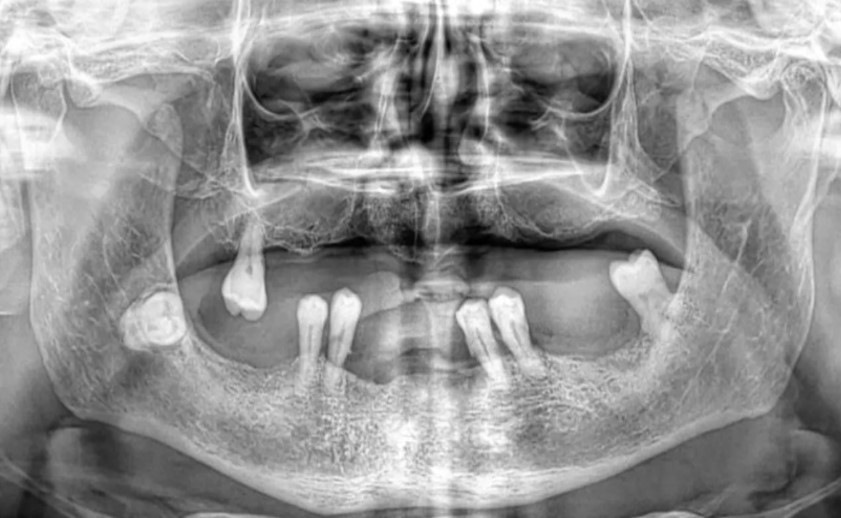

Clinical implications of implant overdentures
The McGill Consensus in 2002 stated that two-implant-retained overdentures are considered the standard of care for edentulous patients and should be made affordable to everyone who is edentulous. The recent 7th ITI Consensus statements found the patient-reported outcomes between fixed and removable prostheses to be comparable. There is more than enough data now to convincingly offer implant-supported overdentures as a strong and viable treatment to our patients especially for those who are frail, old, medically debilitated and unable to afford fixed treatments. (Figs 4-9 depict a clinical case treated with a two-implant overdenture, Fig. 10: 5-year follow-up OPG).
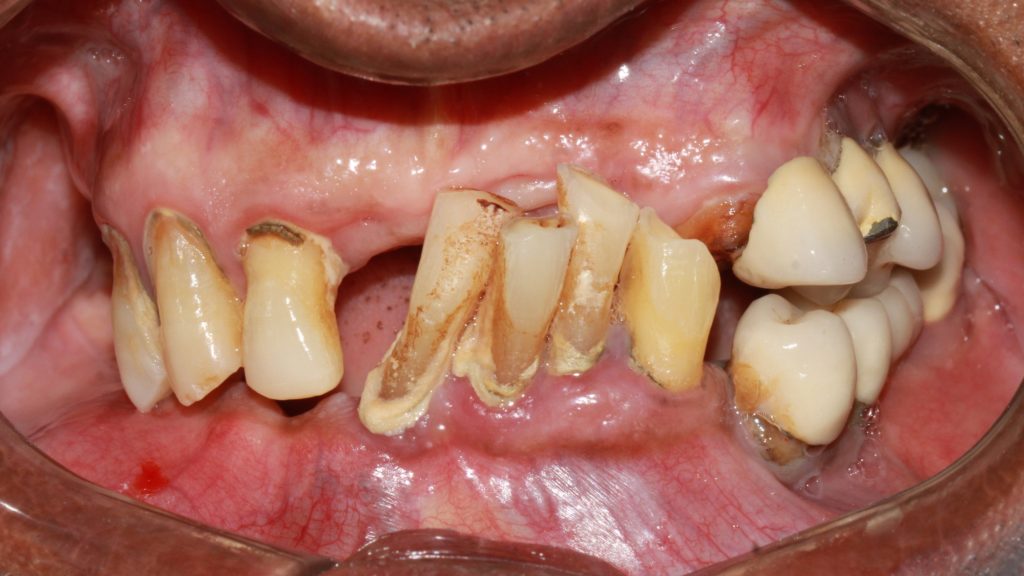
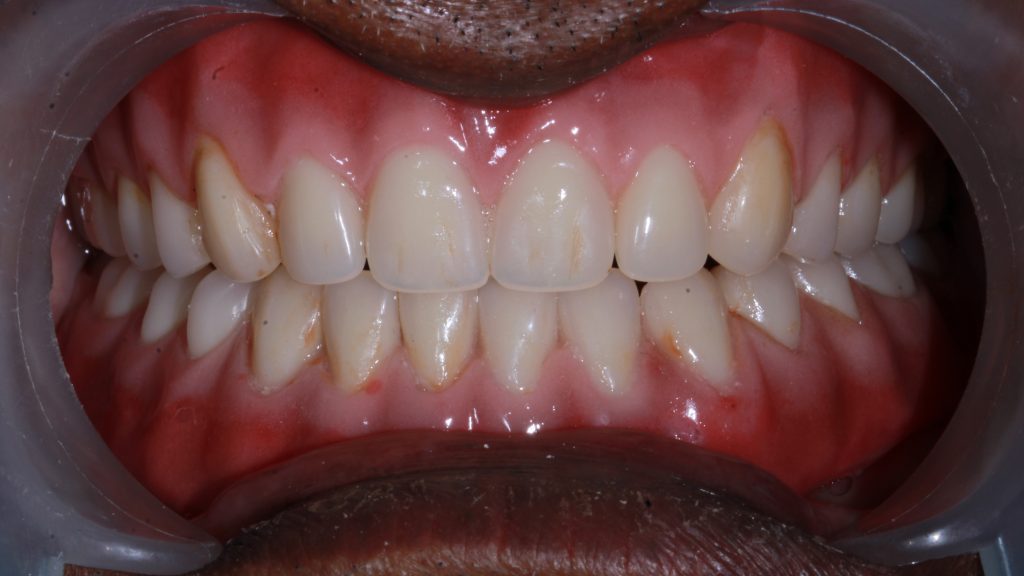

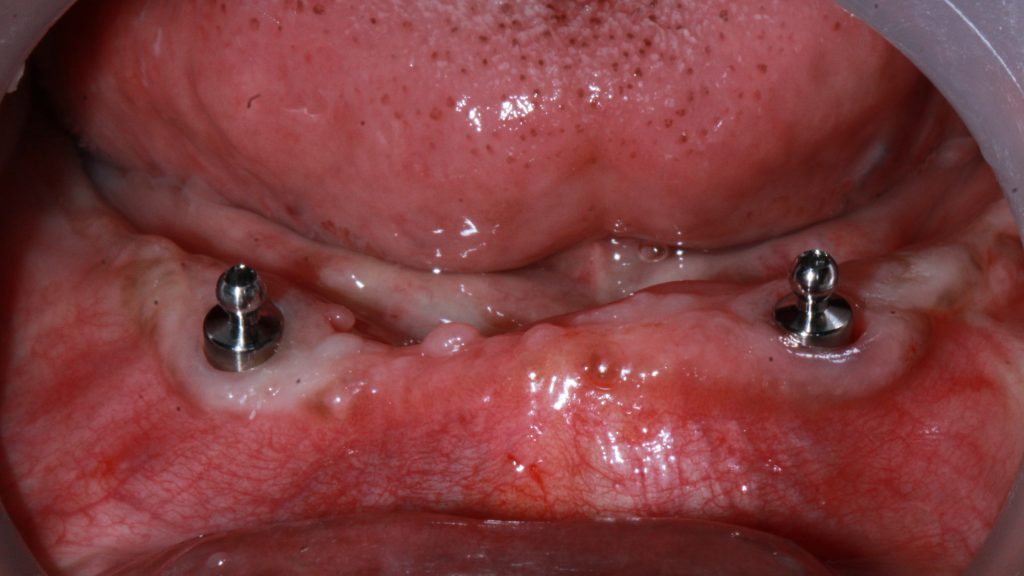
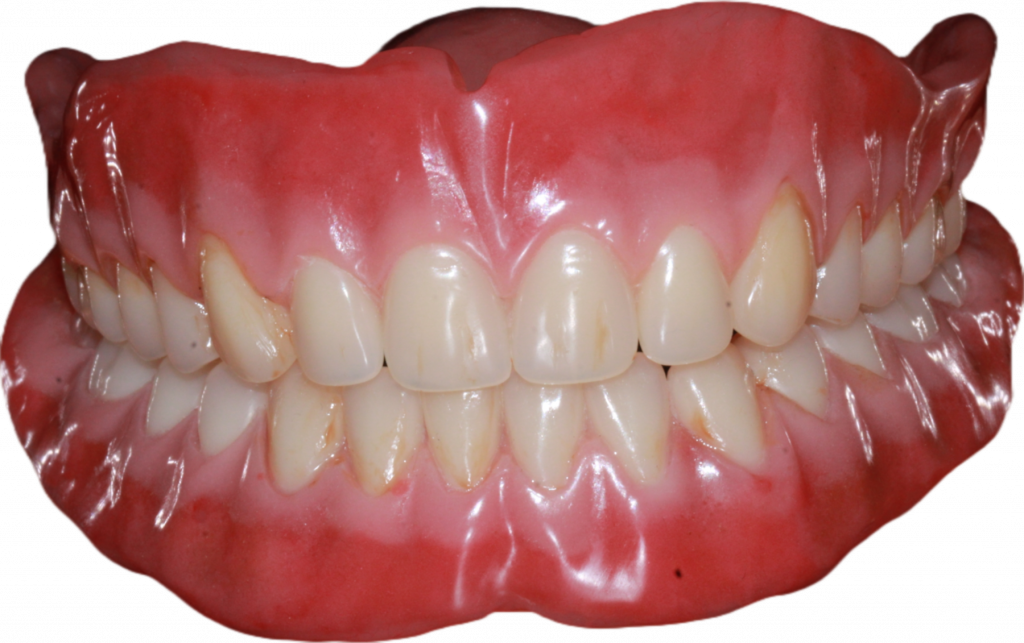
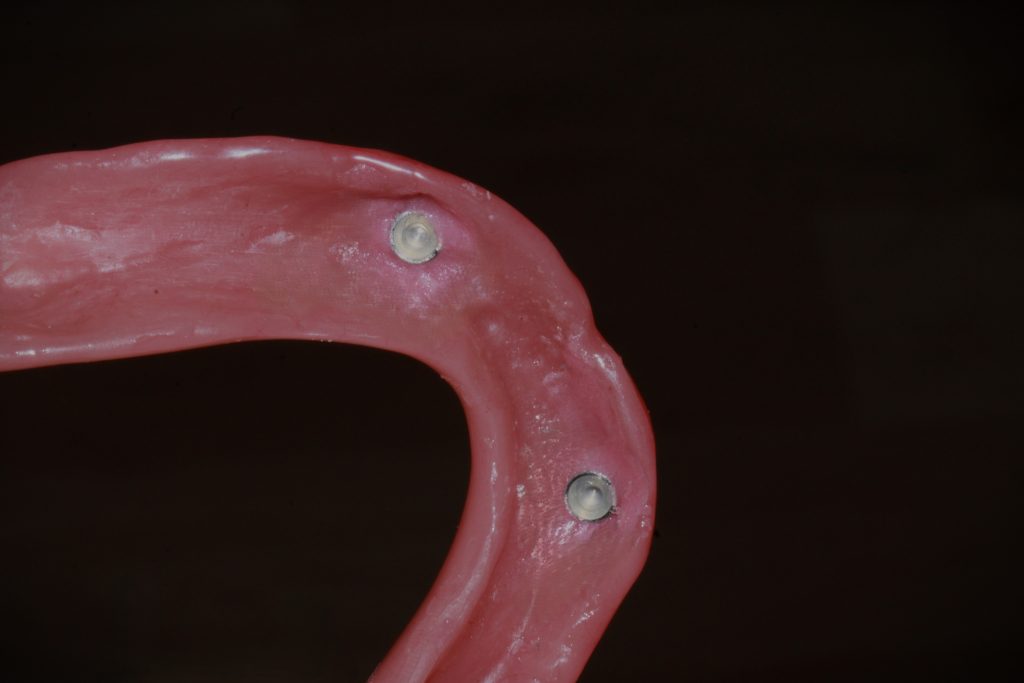

In this era of technology, social media are flooded with images of sophisticated FP-1 implant-supported fixed dental prostheses, which often raises questions about the choice of treatment between salvaging natural teeth or just recreating the same architecture with artificial teeth over implants. DeVans’ dictum, “Perpetual preservation of what remains is more important than the meticulous replacement of what is missing” is more relevant in today’s times and should be treated as gospel.
Conclusion
No treatment is superior to another until the patient’s need is properly addressed. The current trend to generalization of the treatment for edentulism with implant-supported fixed dental prostheses is concerning, and the patient’s specific need is often neglected. The dental profession and the public are more aware of problems associated with mandibular CD than any other dental prosthesis. Because of greater flexibility in implant position and prosthesis fabrication, this is also an ideal treatment modality to begin a learning curve in implant dentistry. Hence one of the most beneficial treatments rendered to patients is also the best introduction for a dentist to the discipline of implant dentistry.

